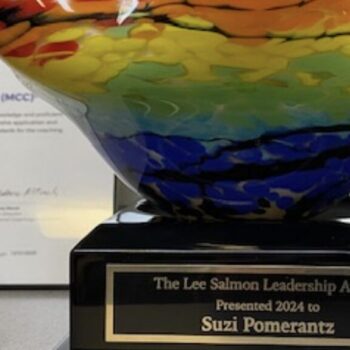
Reframing as an Essential Coaching Strategy and Tool
Using the Existing System
This second solutions-reframing approach is actually a hybrid of the other forms of reframing. (Bandler and Grinder, 1982, p. 171) The existing resources and dynamics of the system (individual or organization) that is being changed are framed in positive terms. Forces that are resistant to change, for instance, come to be seen as the bases for stability in the newly changed system. Many years ago, Seymour Sarason (1972) observed that revolutionary leaders must bring in managers from the old regime to help bring stability to the new government. His observation seems to still hold true. Kurt Lewin and his colleagues similarly noted that any planned change effort must be followed by refreezing—a process that brings stability back to the system. (Lippitt, Watson and Westley, 1958)
People who resist a change can themselves become invaluable resources in promoting and planning for the change. Many resistors, for example, point to past history when declaring that a planned change will never be successful: “We tried that ten years ago and it didn’t work.” Rather than arguing with or ignoring this person, one asks him to help plan for the new change effort so that some of the mistakes that occurred ten years ago can be avoided. The skeptic can also be made the historian of the new project or can assist in the design of its evaluation. Alternatively, those who are usually the innovators and proponents of new ideas—men and women like Ralph—can be placed in the role of program auditor or member of a panel that reviews new program proposals. This helps to shake up old roles and provides everyone with new perspectives on one another and the organization.
Professional coaches can help their clients reframe sources of resistance as assets in yet another way. Typically, policies and procedures are set up to thwart new enterprises. Yet these same policies and procedures that often make it difficult to start something new also make it difficult for anyone to stop the new venture once started. A large organization is often the perfect place to try a new idea. After all, it takes one to two months to find out that something new is being tried. It then takes another month or two to gain the attention of those in the bureaucracy who have the authority to do anything about this new venture—and another two to three months to work through the channels to block it. By this time, the new venture may have proven its worth and can make it on its own. As the popular adage from the 1960s goes: “it is easier to beg for forgiveness [after an action step has been taken] than to ask for permission [before the action step is taken].”
Conclusions
These various reframing tools are not without their own problems—as I have often noted more generally with regard to all second-order thinking and change initiatives. The strategies and tools of reframing certainly should be used by coaches and their clients with discretion and ethical awareness. They significantly expand the repertoire of a coach and make significant change possible in difficult and resistant circumstances. The very forces that bind people and organizations to one way of doing things can be used as levers for change. With such powerful tools we must be certain that these individuals and organizations actually desire the proposed change and trust the intentions and competencies of those aiding in the reframing process.
One coaching client will find a solutions-oriented reframing most helpful, while another may find it more beneficial to focus on the framing of a current or desired state. In working with Susan, for instance, Alicia may think that the most important role she can play is to be reflective with Susan about her relationship with Ralph. Susan might decide that they should focus on Ralph’s problem. They might both decide instead (with Ralph’s concurrence) that Alicia should coach both Susan and Ralph—focusing on the relationship between them rather than on either Susan’s perceptions of Ralph’s problem or the solutions Susan will initiate to solve Ralph’s problem.
- Posted by William Bergquist
- On May 10, 2024
- 0 Comment


Leave Reply